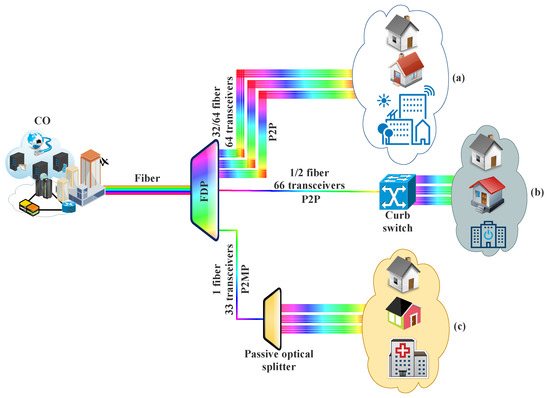Telemetry
ETSI Telemetry Standard for Optical Access Networks to enhance FTTP QoE
As the scale and services offered through the Optical Access Networks increase, it is crucial to maintain network good operation and performance. To achieve this, the Optical Access Network monitoring can be improved when compared to existing traditional methods via automated real-time data collection. Telemetry enables this and transmits data from the optical line terminal (OLT) – i.e., the device at the endpoint of a passive optical network – in real-time to provide information to the data collection platform.
With the new ETSI specification ETSI GS F5G-011 defining Telemetry Framework and Requirements for Access Networks, service providers and operators benefit from the advantages of real-time monitoring with scale, speed and automation using telemetry. The data retrieved by telemetry, together with analytics and AI, will ultimately offer end users an optimized quality of experience (QoE) for their fiber to the home (FTTH) network, unlocking the potential of the fifth generation of fixed networks (F5G). Note that F5G is based on fiber access- not wireless/cellular access.

Today, the Access Network deployment is based on a traditional data pulling methods, such as Simple Network Management Protocol (SNMP), syslog and Command-Line Interface (CLI) to pull data from the OLT to monitor Optical Access Network and troubleshoot any issues. The interface uses proprietary management information bases (MIBs) from different OLT equipment vendors, making automation a difficult task. Each request to pull data is therefore resource intensive and impacts the performance of the OLT, adding complexity because there is more than one pull request per OLT. The pulling method does not efficiently scale.
With the flexibility of telemetry, which uses the push method to continuously stream data from the OLT, the data of interest can be selected from the OLT and transmitted it in a structured format to a data collection platform for monitoring, AI-based analytics and visualization.
Telemetry introduces finer granular data points and more frequent data streaming in the Optical Access Network. It enables better performance monitoring and therefore better control over large Access Networks. Telemetry data can assist in the prediction of network problems and take preventative actions without impacting the performance of the OLT. The operators can gain better visibility and insight into the network. They can also enhance the network operational performance by using data analytics.
“Telemetry technology opens the door to big data and machine learning methods application in the Access Network and brings a clear benefit to end users,” outlines Luca Pesando, Chair of the ETSI F5G group which developed this standard. “In the Group Specification, we also showcase examples of implementation of the telemetry system as we recommend it, already at the stage of Proof of Concept so that operators can leverage the potential of this new telemetry architecture,” he adds.
Requirements of F5G QoE (from ETSI GS F5G 005 V1.1.1 (2022-03):
- The F5G network shall support telemetry.
- The F5G network shall support the capability of telemetry to frequently send measured data.
- The F5G network shall support the capability of telemetry to export fine grained statistics.
- The F5G network telemetry interface shall support per-slice QoS measurement data.
- The F5G network shall support end-to-end QoE assessment in the CPN, Access Network, Aggregation Network, and Core Network.
- The F5G network shall support AI-based QoE assessment based on measured network or application performance data.
- The F5G CPN shall provide a mechanism to improve QoE in the customer premises network (residential, enterprise, verticals).
- The F5G service and underlay plane shall support network-layer QoS measurement mechanisms to support QoE assessment and management.
- The F5G service and underlay plane shall support application-layer QoS measurement mechanisms to support QoE assessment and management.
The ETSI F5G Industry Specification Group is working on 10 other specifications and will soon release F5G PON (Passive Optical Networks) for industrial applications and an F5G security architecture. If you’re interested, feel free to join us and contact [email protected]
About ETSI:
ETSI provides members with an open and inclusive environment to support the development, ratification, and testing of globally applicable standards for ICT systems and services across all sectors of industry and society. We are a non-profit body, with more than 900 member organizations worldwide, drawn from over 60 countries and five continents. The members comprise a diversified pool of large and small private companies, research entities, academia, government, and public organizations. ETSI is officially recognized by the EU as a European Standardization Organization (ESO). For more information, please visit us at https://www.etsi.org/
Press contact:
Claire Boyer
Tel.: +33 (0)6 87 60 84 40
Email: [email protected]
References:
ETSI – New ETSI Telemetry Standard Improves Automation for better End-User Quality of Experience
https://www.etsi.org/deliver/etsi_gs/F5G/001_099/005/01.01.01_60/gs_F5G005v010101p.pdf


